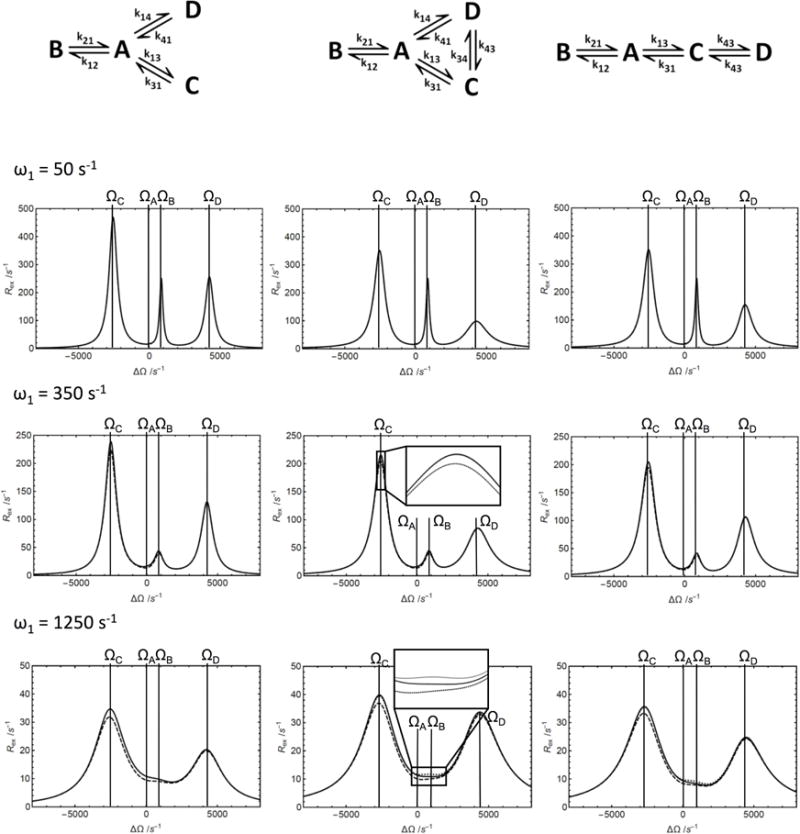Figure 4.

Approximations of the Rex contribution to R1ρ for 4-state chemical exchange schemes. Three different kinetic situations (illustrations at the top of the columns) have been analyzed, star-like four-state scheme (left column), kite-like four-state scheme (middle column), linear four-state scheme (right column). The calculations have been performed at the different irradiating fields, ω1 = 50 s−1 (top row), ω1 = 500 s−1 (middle row), ω1 = 1250 s−1 (bottom row). (Solid) Numerical calculation of Rex = −λ/sin2θ from the least negative real eigenvalue of the 12 × 12 evolution matrix, (dashed) calculation from the first order approximation from Eq. 11, (dotted, linear scheme) calculation from the second-order approximation from Eqs. 29 and 40, (dotted, kite scheme) calculation from the Woodbury approximation from Eq. 50. The insets exemplify regions in which the results of the calculations differ. To center the graph, parameters were chosen so that δA = ΔΩ. Parameters used for all calculations were pA = 0.95, pB = 0.05, pC = 0.025, pD = 0.005, k12+k21 = 140 s−1, k13+k31 = 350 s−1, ΩB − ΩA = −850 s−1, ΩC − ΩA = 2550 s−1, and ΩD − ΩA = −4250 s−1. Additional parameters used depending on exchange scheme: k34+k43 = 700 s−1 and k14+k41 = 350 s−1.
